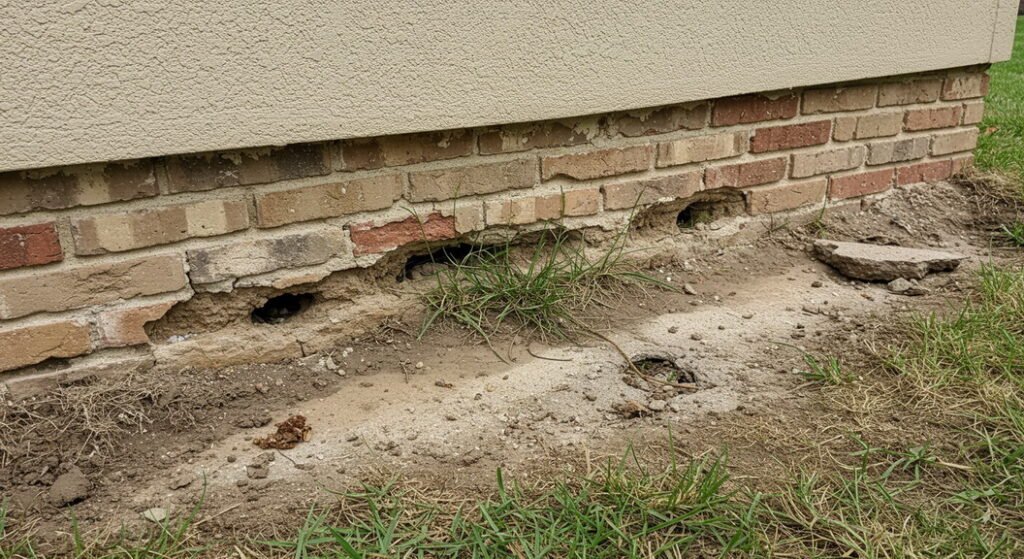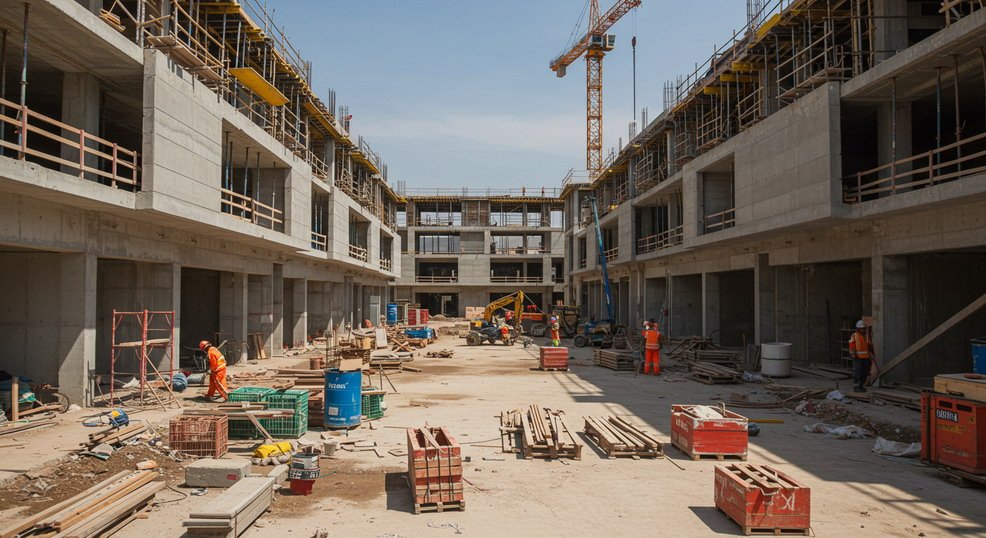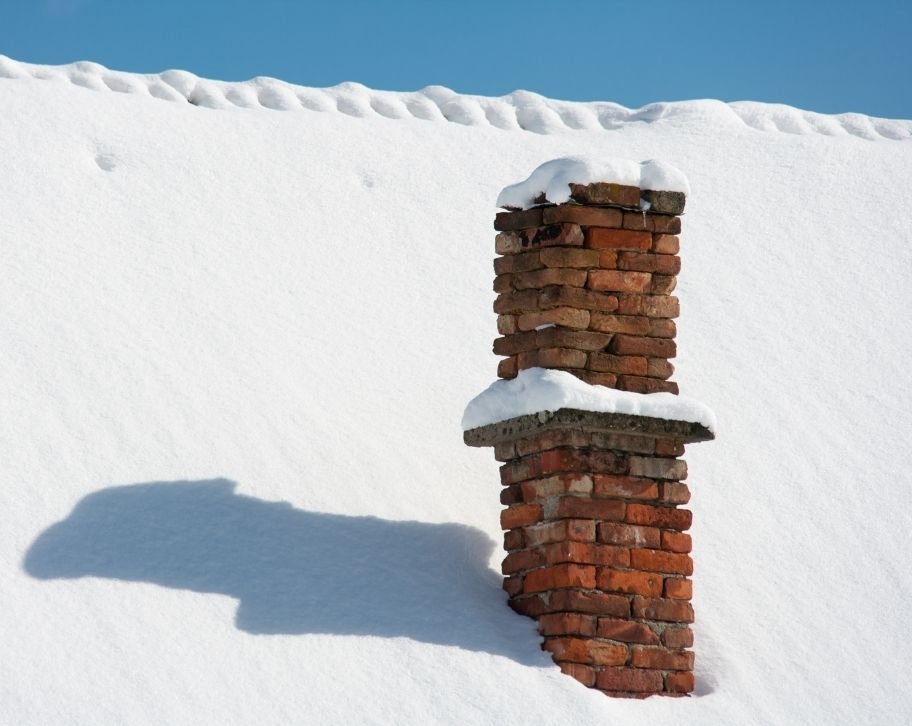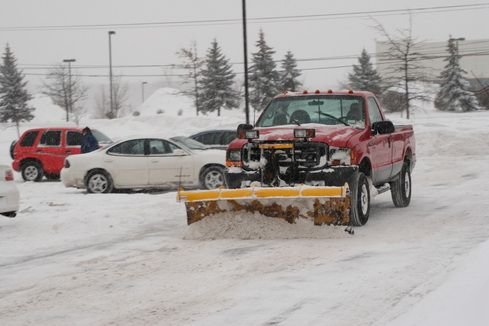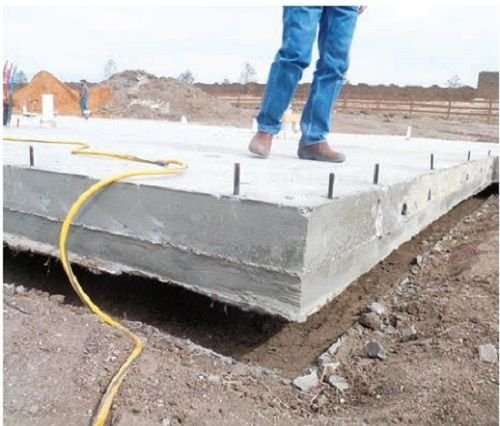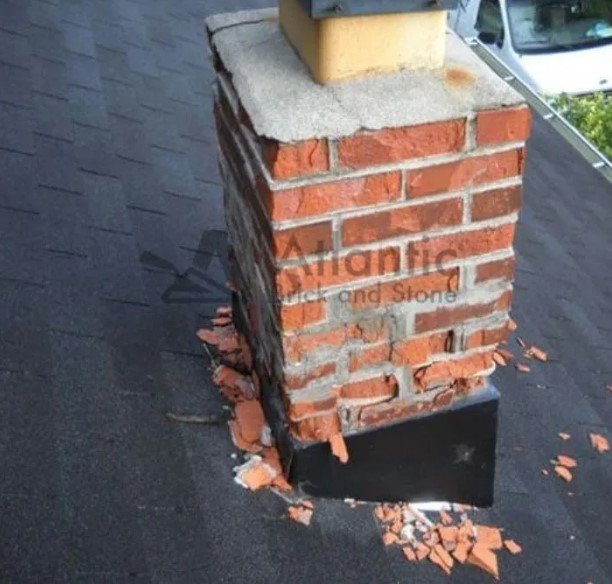What Causes Holes Around House Foundation?
What Causes Holes Around House Foundation? You might have noticed some holes around your house foundation and worry what’s causing these. Could rodents, insects, or shifting soil be to blame? These gaps aren’t just eyesores—they might invite pests, weaken your foundation, or signal hidden water damage. How do you stop the problem before it escalates? Start by assessing the hole size, location, and surrounding damage. Solutions range from sealing entry points to regrading soil or installing French drains. Addressing the root cause early can save you from expensive repairs in future. Lets discuss the causes of these holes. Soil Erosion Water Runoff Rainwater racing uncontrollably along your foundation acts like a small river, carving into the soil like fingers through wet sand. As it flows, it whisks away loose dirt particles layer by layer. What starts as minor gullies can evolve into gaping holes over months, especially if your yard slopes toward the house. The constant “washing away” effect leaves hollow spaces beneath walkways, patios, or right against your foundation walls. Poor Drainage When water pools near your foundation, it transforms stable soil into soggy mush. Imagine stepping into mud – the ground shifts and loses its grip. This waterlogged soil becomes heavy and unstable, compressing under its own weight as the water slowly drains. Eventually, sections collapse inward, leaving crater-like depressions. The longer the water sits, the deeper these hollows become, often pulling soil away from foundation walls. Drought Extended dry periods cause soil to contract, creating gaps around your foundation. These holes may appear suddenly after prolonged drought conditions as soil moisture levels plummet. The resulting soil shrinkage can create concrete cracks and compromise your foundation’s stability. Tree Roots Growth Tree roots seeking moisture and nutrients can exert significant pressure on the soil around your foundation. As they grow and expand, they displace soil and create pressure points that may result in holes and destabilization. This issue is particularly common with older concrete slabs where root systems have had time to develop extensively. Decay The decomposition of dead tree roots leaves behind underground voids that can eventually collapse, forming holes around your foundation. While these spaces might not be immediately visible from the surface, they could indicate future foundation issues requiring professional attention. Foundation Settling Uneven Settling Imagine your house doing the limbo – if one side sinks lower than the other, it pulls away from the surrounding soil. This uneven settling creates wedges of empty space along your foundation – the “holes” you see. It’s like when a tooth’s cavity starts small but grows as decay progresses. The weight imbalance makes your foundation push or pull on the soil differently in various spots. Areas experiencing more pressure crack and crumble, while others detach entirely. Tilted chimneys or doors that scrape floors aren’t just quirks – they signal this soil-foundation separation that eventually leaves visible gaps. If left unchecked, these spaces let rainwater collect and erode more soil, turning narrow gaps into foot-deep craters. Plumbing Leaks Hidden plumbing leaks gradually saturate the soil around your foundation, leading to erosion and hole formation. These water-related issues often attract pests seeking moisture sources, creating a compound problem that requires both plumbing repairs and pest control measures. Animal Activity Holes around your foundation could be the handiwork of determined rodents seeking shelter. Mice, rats, and voles are natural diggers, creating extensive burrow systems that can span anywhere from 5 to 35 feet near your foundation. These critters aren’t just randomly digging; they’re on the hunt for food sources and safe spaces away from predators. You might notice that voles are particularly active during spring and fall, leaving distinctive signs such as small holes and runway systems throughout your yard. If you spot multiple entry points around your foundation, it’s likely that you’re dealing with a rodent infestation that requires immediate attention to prevent structural damage. But it’s not just rodents causing trouble. Insects, despite their small size, can cause significant damage over time. Ants construct intricate tunnel networks that compromise soil stability, while termites might establish colonies that create extensive underground habitats. These pests build complex nests deep within the soil, potentially weakening your foundation’s support system and creating concerning voids. And let’s not forget about snakes. Although they rarely dig their own holes, snakes often become unwelcome residents around foundations by utilizing existing burrows. They tend to repurpose abandoned rodent holes, which often signals a broader pest problem on your property. Their presence might indicate the need for comprehensive control tactics to address both the snakes and their prey, ensuring that your foundation remains intact and secure. Why professional help matters When foundation worries keep you up at night, we’re here to help. At Atlantic Brick and Stone – Fredericton’s trusted foundation repair specialists – we diagnose issues most homeowners miss. Think of us as house doctors who will hunt for hidden cracks, test soil stability, and measure settling with right tools. Our repairs dont just cover symptoms – we fix root causes. We reinforce crumbling concrete, stabilize shifting slabs, and seal gaps that invite pests. When you work with us, you will get solutions like: Custom drainage systems to redirect water Steel piers to stabilize sinking foundations Polymer injections that lift settled concrete Don’t let small holes grow into major headaches. We offer inspections with clear explanations, using tools like thermal imaging to show problem areas. Protecting your home’s value starts with acting early – that’s why our team prioritizes preventive fixes. Curious about costs? We provide transparent estimates that break down materials, labor, and timelines. No pressure, just honest advice. Reach out to schedule your inspection – your foundation deserves expert care. Summary Monitor your foundation regularly for new holes Address drainage issues promptly Control pest populations before they cause damage Maintain proper landscaping around your foundation Seek professional help for any foundation problems FAQs about holes around house foundation How do I stop animals from digging around my foundation? Creating barriers with hardware cloth or wire

